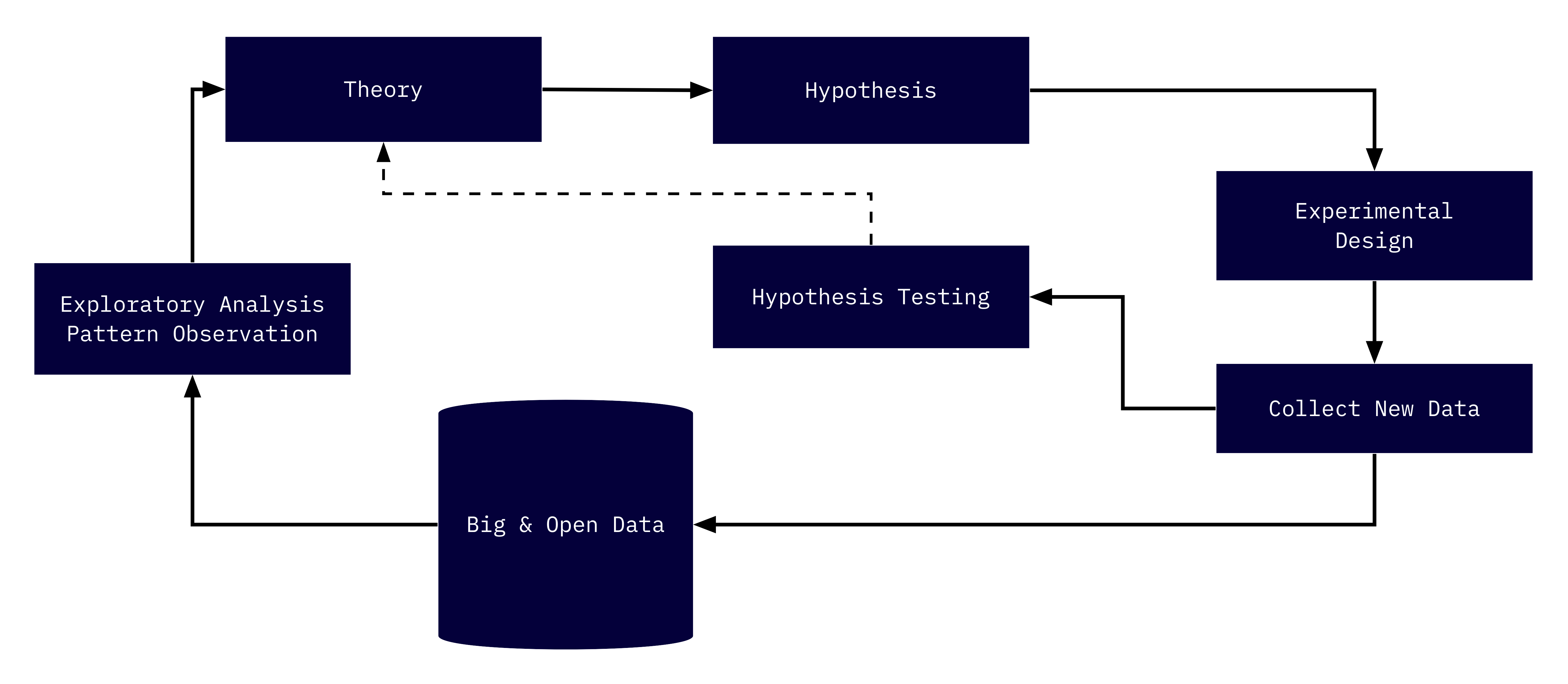4 Approaches to and Schools of Urban Informatics
4.1 Scientific approaches
In the sciences generally, there are two approaches to scientific inquiry: inductive and deductive. These two approaches can be best characterized as “bottom up” and “top down,” respectively. Each has their own origins, strengths, and weaknesses. An argument has been raging since the 17th century about which approach is best.
Deductive reasoning is the establishment of a principle based on a set of accepted premises. Take the classic example: all people are mortal; Socrates is a person and therefore is mortal. We call this “top-down” reasoning.
Inductive reasoning works in the reverse order. It is the construction of inferences and general principles based on observed phenomena. For instance if the only things that fly have wings, then wings must be necessary for flight. We might call this “bottom-up” reasoning.
To adapt this logic to scientific approaches we can think of the following order of operations. With deduction we start with a theory about the workings of some observed phenomenon. From this theory, we create a hypothesis, observe the phenomenon, then use those observations to test th theory. With induction we observe patterns. From our observations we create hypotheses.
4.2 The Chicago School
Much of what is known as the urban sciences today can be traced back to the late 19th and early 20th centuries at the University of Chicago. The university was, at the time, the epicenter of the new field of American Sociology, which came to be known as the Chicago School. In that era, social scientists were creating grand theories of the world. Take, for example, the new field of anthropology that crafted theories about the origins of the human race. The Chicago School “fostered a very different view of sociology: first-hand data collection was to be emphasized; research on the particular case or setting was to be stressed; induction over deduction was to be promoted.”12
Scholars such as Robert Park, Ernest Burgess, and Louis Wirth developed a number of micro-theories to understand the city. Most notably is the culminating work The City by Park and Burgess, a collection of essays that encapsulates decades of careful observation that led to a number of theories, many of which still have influence today. Their body of work, important in so many ways, is an early paragon of an inductive approach to social research.
4.3 Complexity and Santa Fe Institute
On the other end of the spectrum rests the Santa Fe Institute (SFI) and their complexity science. The SFI’s mission is to “endeavor to understand and unify the underlying, shared patterns in complex physical, biological, social, cultural, technological, and even possible astrobiological worlds.”13 Crudely, it is their goal to unify theory into one general master theory. Central to their theoretical focus is the the view that “valuable ideas are often confined to the echo chambers of academia.”14 They are not wrong.
Their work is important in bridging gaps between disciplines. They apply biological theories of scaling to those of human development. And their findings have been fruitful. Their focus on the interconnectivity of theory in both the natural and social worlds is messy work that must be done. This too is in the spirit of the Chicago School, as illustrated by it’s view of the city as an organism.
4.4 A Hybrid Approach
Today, we as social scientists enjoy access to more and better data than ever. As such we are able to take a much more hybrid approach. These data provide such fine detail that scientists can discern never before seen patterns. This allows us to take a much more inductive approach, in which we can craft theories from the patterns that we observe, then test those theories in creative ways. This hybrid methodology incorporates both inductive and deductive approaches. The Boston Area Research Initiative (BARI) is one such group that utilizes this hybrid approach.

To utilize the above methology, we as scientists start with the data. We use publicly available (open) administrative data to explore. We get our metaphorical hands dirty with the data. After we munge it, transform it, and rearrange it, we will walk away with some tidbit of information. From that we discover more taken together we develop a theory—a framework for understanding what we have observed. Next, we then develop a hypothesis using that new theory and apply it to some other set of data or some new circumstance to test and refine the theories we have developed. In this we both create theory from observation, and test those theories on new and unexplored observations.
Dan O’Brien, Director of BARI, claims to track more with the inductive approach of the Chicago School. But, BARI also actively seeks to evaluate existing theory. There are no better examples of the BARI approach than the development and use of ecometrics to understand the city and test existing theory.
In the next chapter we will learn about ecometrics, their origins, and their use in evaluating the prominent criminological Broken Windows theory.